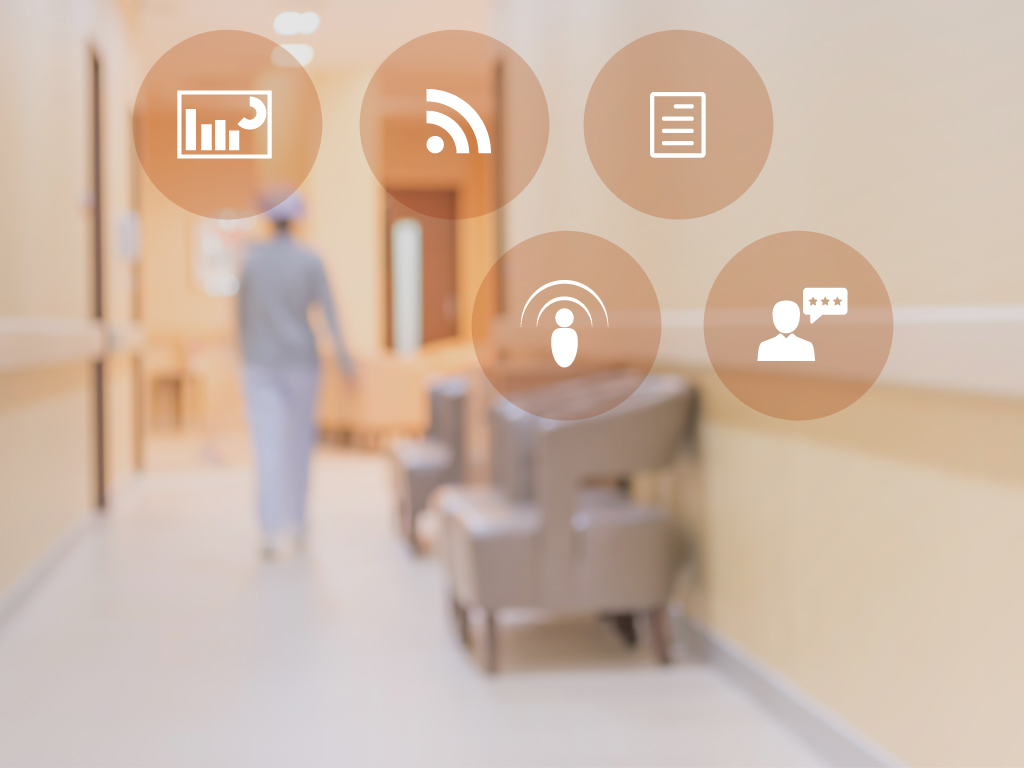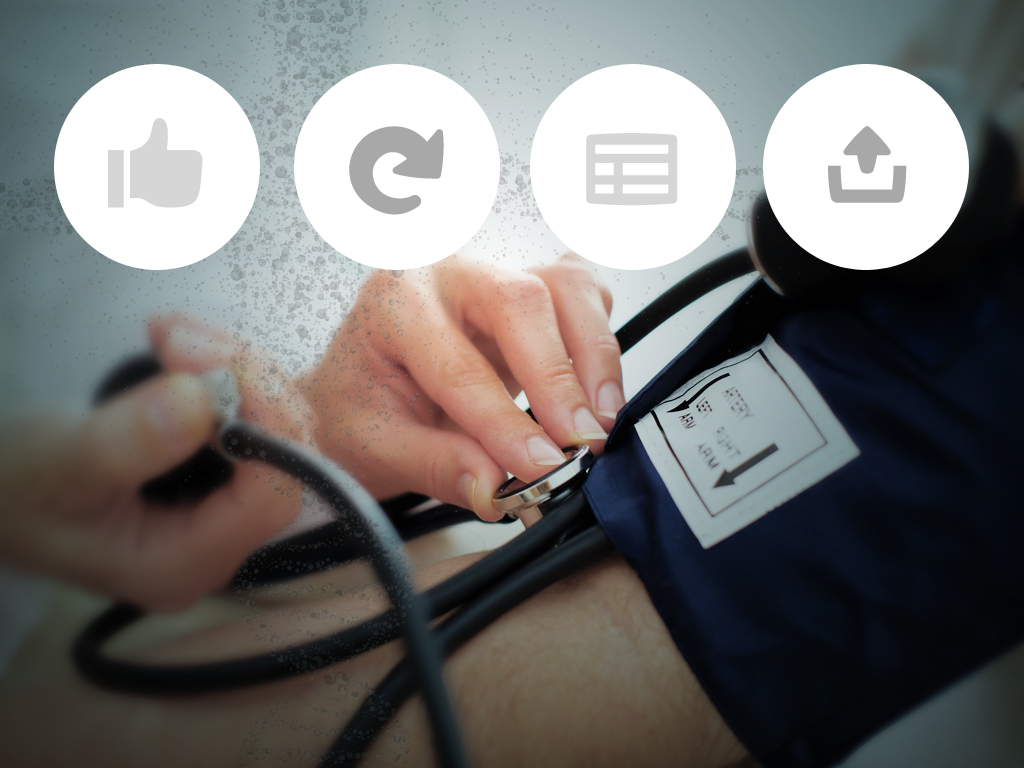2015 is already being touted as ‘the year of the consumer’ and nowhere was a sense of this more prevalent then at CES 2015. One clear trend that emerged at the show: a growing momentum for smart, connected devices, each looking to establish a new precedent in improving the customer experience. New technology for the health care industry was particularly exciting. What will the introduction of connected devices bring to the industry, and why should brands and providers adapt to the imminent change?
The Consumer Electronics Show has typically been dominated by established technology players, but now even health and fitness brands such as Adidas, New Balance, and L’Oreal are looking to meet consumer demands for new technology and innovation in fields such as wearables.
Today, smart brands across industries are looking to zero in on the intricacies on the way consumers use and experience products, creating a generation of new, connected devices that are designed to empower and complement our ability to fulfill modern, digital lives.
Brands are looking bring us digital experiences in new and innovative ways, beyond the smartphone.
One industry seeing such a revolution is consumer health care products. Allergy pens, baby bottles, helmets and more products are being reinvented, digitized, and connected in an effort to improve a particular aspect of consumers’ lives.
Are we set to experience a “digital renaissance” – a boom of innovation where everyday devices are reinvented and smart, connected devices? If so, the question is how should health care brands prepare for the potential disruption a new Internet of Things could bring to the industry.
Connected Devices Set To Change Consumer Health Care
The conditions are giving way to the creation of many new products in the health care industry. Products that are innovative, connected, and unique, catering to, and focusing in on particular needs and requirements of patients and consumers. Let’s look at a few.
Epipen
EpiPen is a device designed for those who suffer from allergic reactions. Unlike non-digitally enabled devices, when connected to the associated Veta app, users will be alerted if they have forgotten their EpiPen, and the Veta app can even warn family if the user is having an allergic reaction.

EpiPen has the potential to save lives and is a great example of the way technologically-enabled devices can be used to seamlessly improve consumer experiences.
Breathometer
While it’s far from life or death, another gadget on show at CES seeks to save users embarrassment when they’re suffering from a spot of bad breath. Californian company Breathometer have exhibited their mint breathalyzer, a device that enables users to measure the amount of volatile sulphur compounds and bacteria in the mouth.

As was the case with Epipen, the device seamlessly connects with a user’s smartphone via a Bluetooth connection. Using one lets users know when they ought to freshen up or need a drink.
Baby GlGl
Even babies are getting connected. Baby GlGl, from Slow Control, (short for “Glug Glug”) is a smart baby bottle that does everything from measuring how much a baby is drinking, to indicating the perfect angle to feed a baby to minimize air bubbles.
Concept Cycling Helmet
Another piece of technology looking out for consumers’ well being, and one that made quite a few waves at CES, was the concept cyclist helmet from Volvo and POC – a device that connects to similarly enabled Volvo cars that can warn drivers when a cyclist is approaching, or riding precariously in a vehicle’s blind spot.
The device hopes to use the power of connected technology to reduce the number of cycling related accidents.
Is Health Care Ready For An ‘Internet Of Things’?
From a consumer perspective, the short answer is yes. It’s no surprise that a considerable number of new products unveiled at CES served the health care industry; recent research has provided strong indications that consumers are willing to try new products that serve to monitor and benefit their health.
The challenge is perhaps more complicated for brands operating within the industry. Innovative new consumer products are showing that health care is potentially approaching a new era which could see a shift in which consumers receive care from dedicated practitioners and health care institutions, toward a more personalized, informed, and preventative form of care within their own homes, empowered by digital devices able to monitor and guide consumers.
At the moment it may be independent startups that are capitalizing on the opportunity to serve consumer appetite for new products. However, success here precludes greater uptake within established health care institutions and industry players, which will (as all sectors have already or will soon do so) be subject to the changes of digital transformation that consumers have come to demand expect.
There remains, however, a challenge for the health care industry. Health care, perhaps by virtue of a long established authority and tradition, has perhaps been shielded from the change that digital technology has brought to consumer lives.
“What health care organizations must understand is that patients are also consumers, and they have been interacting with brands and businesses via digital channels for years, if not decades. They have a high level of expectation for things like: user experience, content and utility, and relevance,” said John Simpson, president of Digital Health Strategies. “Health care organizations and brands must deliver on all of these demands because they are not only competing with each other; they are competing with all of the other digital messages, products and services that consumers receive from other brands and organizations on a daily basis.”
Ultimately it paints a simple message for health care providers and it’s one, according to Simpson, “that other industries have been saying (and living) for a long time: Your patients now hold significant power and you must view them as an active partner in the delivery of care. The onus is on health care organizations to be relentlessly user-focused, and to put products in front of consumers at the right time, on the right platform, and with a clear value proposition.”
It means that health care as an industry needs to meet the same level of expectations that consumers are experiencing from market-leading brands from other industries, to empower “a quality user experience, and then proactively provide [consumers] with relevant, valuable content and utility on an ongoing basis” Simpson said.
Customer-Centricity Is Key For Connected Devices To Succeed
The products unveiled at CES are exciting, but more than ever they need to fit in to an industry that is able to support their existence. Brands need to provide the very highest level of customer-centricity, to promote channels for connectivity, engagement, and communication, and to ensure new products adhere to the values – simplicity, speed, and ease of usability – that the digital revolution has instilled within consumers. As Michael E. Porter’s Harvard Business Review article, “How Smart, Connected Products Are Transforming Competition”, indicated in November 2014:
“As with the internet itself, smart, connected products reflect a whole new set of technological possibilities that have emerged. But the rules of competition and competitive advantage remain the same. Navigating the world of smart, connected products requires that companies understand these rules better than ever.”
The opportunity for health care brands will be in connecting innovative products with the content and channels consumers are accustomed to via digital channels, in order to raise awareness, promote the benefits of the technology, and empower their lives.
Can connected products enhance user journeys and experiences?


